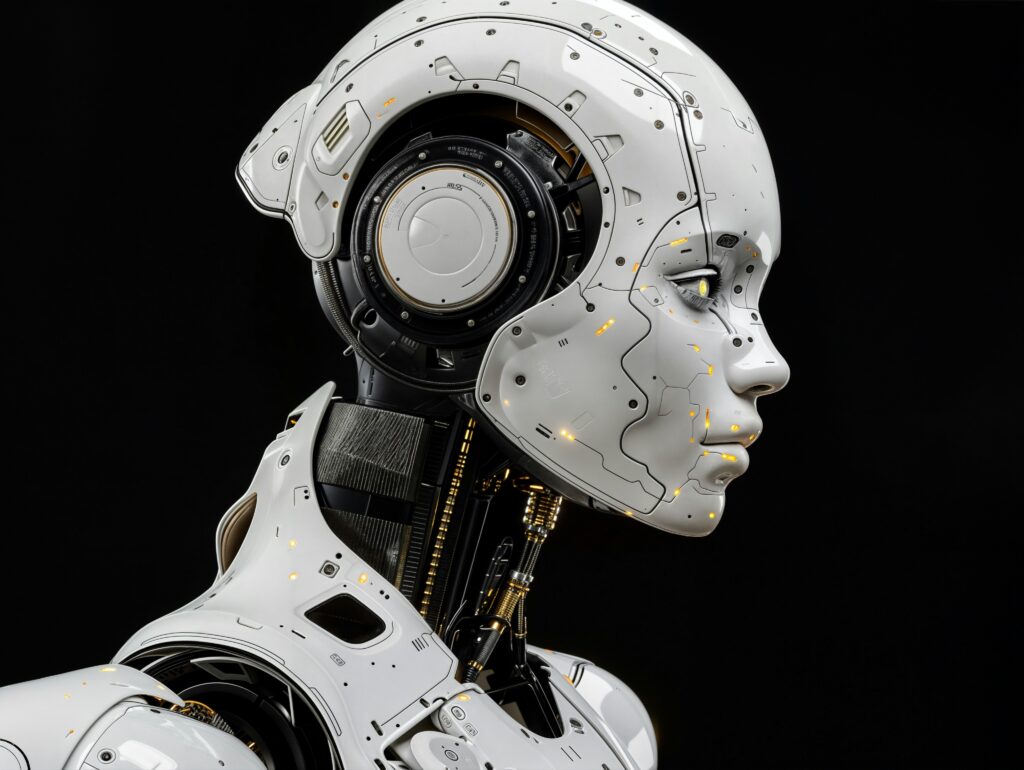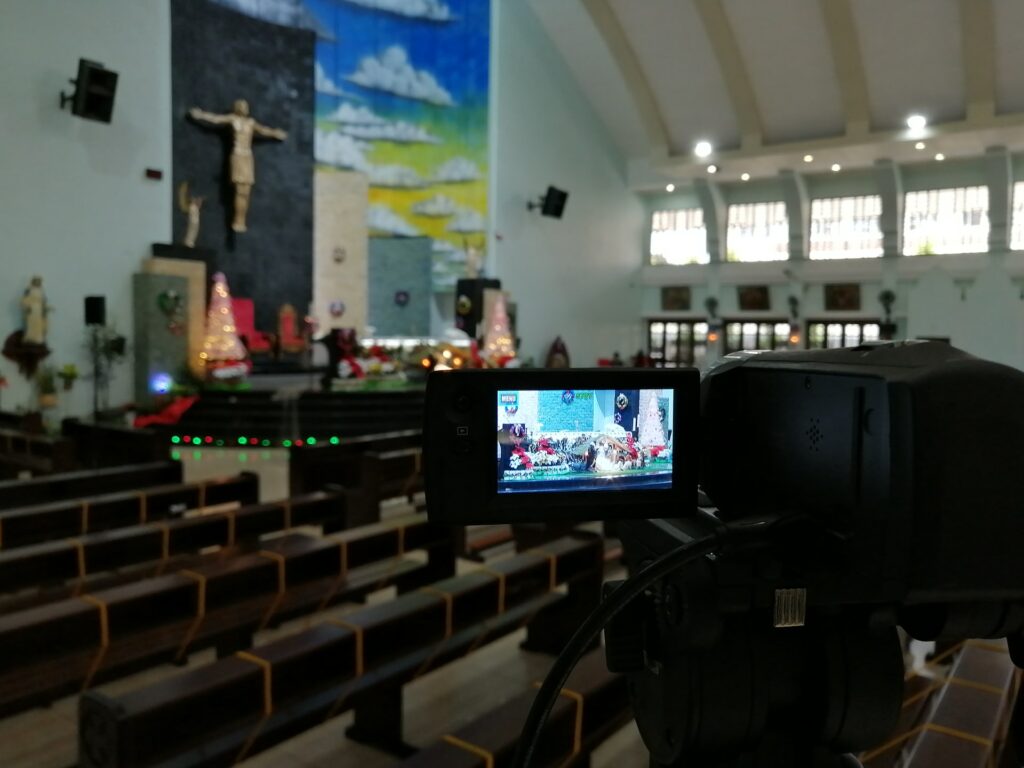We live in interesting times. Our daily encounters and experiences are increasingly mediated and shaped by digital and emerging technologies, especially artificial intelligence (AI). Wearable smart rings and devices monitor our vital signs, providing real-time feedback on our fitness and offering health recommendations. Digital devices buzz in our pockets, reminding us of upcoming meetings, deadlines, and lunch dates. AI-powered platforms like Coursera, Duolingo, and Grammarly help us learn new skills, ideas, and languages, even correcting our grammar as we draft emails.
Even the spiritual aspects of contemporary life are becoming curated and enhanced by digital tools. Meditation apps like Calm or Headspace use AI to recommend meditations and spiritual content based on user preferences and goals, encouraging mindfulness and mapping spiritual progress in an age of digital distractions. Websites like Pray.com integrate AI to help individuals personalize their prayers based on their online calendars and activities. AI-powered platforms like Scribed.ai guide clergy through options to create custom messages and religious teachings tailored to specific audiences or faith practices, streamlining sermon preparation to allow leaders more time for community engagement.

AI has garnered many critics and evangelists who prophesy about where intuitive and automated platforms may lead us. Simply proclaiming AI to be either a savior or a slave maker is not helpful. The reality is that AI technologies are human-designed innovations that present both unique opportunities and challenges, promising structural-technical and social-cultural changes in the years to come.
This essay offers an introduction to a new essay forum by the Social Science Research Council that investigates how our understandings of religion and human agency are influenced by this current moment. The aim of this forum is to explore the intersection of artificial intelligence and human agency and their potential impact on religious practices and conceptions of spirituality in society. By bringing together voices from the study of media, religion, and culture, this forum highlights different scholarly approaches to address how emerging technologies empower and disrupt the spiritual lives of religious actors and groups. This essay begins with a brief overview of research on the impact of technology on religious communities and approaches taken in framing contemporary spiritual engagement with technology over the past two decades. It then explains the orienting research question for this essay forum and contextualizes it. Finally, it introduces the four essays in this forum, mapping differing perspectives on the implications of AI for religious communities and cultures.
Studying Media, Technology, and Religion: Roots of a Conversation
The study of emerging technology, religion, and digital culture has been an interdisciplinary effort gaining attention in the mid-1990s from scholars in media studies, sociology, and religious studies, who began examining how religious practices adapted to the internet. Initial research was exploratory, focusing on trends in religious expression in online environments, referred to as “cyber-religion” or “virtual religion.”[1] These studies evolved from distinguishing between religion taking place on the internet and religion imported from traditional offline contexts, highlighted by Christopher Helland’s classifications of “religion online” and “online religion.”[2] By the early 2010s, scholars began referring to this field as “digital religion,” a term emphasizing how online and offline religious experiences increasingly intersect.[3] Initially, much of this work analyzed how digital media platforms provide tools that transform traditional religious beliefs, authority, and community structures. Recognizing the reciprocal relationship between digital technologies and religion has become particularly important with the rise of AI technologies, as religious practices and beliefs are increasingly bridged, blended, and blurred.[4]
The study of digital religion has focused on several core themes about how digital technologies affect religious practices and beliefs. A central focus has been the intersectionality of online and offline religious experiences, highlighting how these spheres increasingly blend to create new modes of spiritual expression. Scholars such as Helland explored this intersection by examining digital spaces as either extensions of traditional practices or interactive arenas for communal engagement.[5] Campbell further underscores how these integrated environments challenge conventional distinctions, illustrating the reciprocal influence between digital platforms and physical, religious spaces.[6]

This convergence raises questions about religious authority and power dynamics in a digital age. The decentralization of religious knowledge and the democratization afforded by the internet challenge traditional hierarchies. Cheong, Huang, and Poon explored how digital platforms enable religious leaders and institutions to renegotiate their roles, strategically engaging with technologies to maintain relevance and influence.[7] These shifts in authority extend to community formation and identity, as online platforms become vital spaces for congregations and individuals to express and reshape religious identities. From virtual congregations[8] to diasporic communities,[9] digital spaces foster new modes of connection, complicating traditional notions of religious belonging. These explorations proved particularly relevant during the COVID-19 pandemic, which accelerated the adoption of online platforms for worship and religious engagement.[10] The adaptability of religious communities in such contexts exemplifies the resilience and transformative potential of faith in a digital era.

The ethical and theological challenges introduced by digital media add another layer of complexity. Issues such as the authenticity of digital rituals, the integration of artificial intelligence, and the ethical dilemmas posed by robotics in religious practices reflect the multifaceted nature of digital religion. For instance, recent research by Cheong and Chen examines the implications of religious human-machine communication, signaling an emergent frontier in the interaction between faith and technology.[11] Alongside these challenges, the study of digital religion addresses themes of gender, sexuality, and inclusion, with Tsuria et al. exploring how digital platforms amplify marginalized voices and facilitate progressive religious dialogues.[12]
These interconnected themes reveal the richness and depth of digital religion studies. They underscore the importance of understanding how technology reshapes the practice of faith as well as broader conceptions of community, authority, and identity in the contemporary world.
Orienting the Conversation Around the Human Spirit, Agency, and Religion
The outputs of the AI revolution are often praised for making work more efficient and enabling new possibilities for hobbies, passions, and spiritual growth. This new era of media technology promises greater speed, efficiency, and progress, repackaging the values of Fordism for the digital age. Just as Henry Ford’s system of mass production revolutionized manufacturing—prioritizing speed and productivity to make goods accessible to a broader audience—our digital world promises to democratize access to services, information, and opportunities.[13] Yet, within the hype of AI’s potential, we must consider how human needs and values, like creativity and community, may be overlooked.
The goals of Fordism—efficiency, speed, and progress—still drive the technological enterprise, even though assembly lines have been replaced by algorithms, AI, and digital platforms. While the technological landscape has changed, many questions about the societal impact of innovation remain. There are notable parallels between the industrial values of the past and their re-emergence in today’s cultural milieu, now applied to every facet of modern life.[14]
Amid this complexity, this essay forum seeks to reflect on the opportunities and challenges AI introduces to spiritual frameworks and religious communities. The central question it addresses is:
How should we understand current negotiations between the human spirit, agency, and religion in an age of digital mediation and artificial intelligence?
The idea of the “human spirit,” often associated with creativity, resilience, and the search for meaning faces new dimensions of expression and constraint.[15] Digital and AI platforms allow unprecedented access to spiritual teachings and global connectivity, fostering communities that transcend geographical boundaries. However, they also risk reducing spiritual experiences to algorithmically curated content, potentially diluting their depth and authenticity.

Agency, the capacity to act independently and make choices, is both enhanced and compromised by emerging technologies. AI tools allow individuals to personalize their spiritual journeys, tailoring content to preferences and needs. However, the algorithms underpinning these tools can exert subtle influences, shaping choices in ways users may not fully understand.[16]
Religion, often associated with institutions that serve as custodians of spiritual knowledge and cultural practices, faces its own challenges in the digital era.[17] While many organizations leverage technology to reach broader audiences, from live-streamed services to AI-generated sermons, this transition also risks commercialization, the erosion of communal bonds, and ethical dilemmas surrounding AI’s use in sacred contexts.
To navigate this terrain, individuals and institutions must reflect on technology’s design, weighing its advantages and disadvantages to ensure ethical decisions. This negotiation requires balance—one that honors spiritual traditions while recognizing technology’s opportunities—guided by critical awareness, ethical innovation, and a commitment to preserving human uniqueness amid technological transformation.
Approaches to the Question in Essays
The essays in this forum explore the intersections between religion, technology, and human agency, offering diverse perspectives on how these forces shape spiritual practices. Giulia Evolvi examines the blurred boundaries between online and offline religious practices using hypermediation theory, challenging distinctions between mediated and non-mediated spaces and urging a rethinking of religious experiences in the digital age.
Pauline Cheong reflects on how AI redefines human agency within the Technosphere. She considers how religious understandings of agency adapt or resist as AI introduces power dynamics that challenge spiritual communities. Cheong raises critical questions about how AI reshapes autonomy in an automated world.

Nabil Echchaibi critiques AI’s ethical dimensions, focusing on its potential to perpetuate discrimination, particularly against minority religious groups like Muslims in America. He explores whether AI can become a tool of hope for religious communities or remain a reflection of societal marginalization.
Adding a theological lens, Philip Butler combines Liberation Theology and Black Transhumanism to evaluate AI’s societal and spiritual outcomes. He highlights how Black bodies, as empowered spiritual agents, can inform ethical frameworks for AI’s development. Together, these essays call for a critical, inclusive dialogue about religion, agency, and digital mediation, inspiring thoughtful engagement with AI’s role in shaping spiritual futures.
Footnotes
[1] Heidi A. Campbell and Pauline H. Cheong, The Oxford Handbook of Digital Religion (Oxford: Oxford University Press, 2024).
[2] Christopher Helland, “Religion Online/Online Religion and Virtual Communitas,” in Religion on the Internet: Research Prospects and Promises, eds. Jeffrey K. Hadden and Douglas E. Cowan (London: Elsevier Science, 2000), 205–224.
[3] Heidi A. Campbell, Digital Religion: Understanding Religious Practice in New Media Worlds (New York: Routledge, 2013).
[4] Heidi A. Campbell, Digital Creatives and the Rethinking of Religious Authority (New York: Routledge, 2020).
[5] Helland, “Religion Online/Online Religion.”
[6] Campbell, Digital Religion.
[7] Pauline H. Cheong, S. Huang, and Jennifer P. H. Poon, “Cultivating Online and Offline Pathways to Enlightenment: Religious Authority and Strategic Arbitration in Wired Buddhist Organization,” Information Communication and Society 14, no. 8 (2011).
[8] Campbell, Digital Creatives.
[9] Pauline H. Cheong and Jennifer P. H. Poon, “Weaving Webs of Faith: Examining Internet Use and Religious Communication Among Chinese Protestant Transmigrants,” Journal of International and Intercultural Communication 2, no. 3 (2009): 189–207.
[10] Marsha Alimardani and Mona Elswah, “COVID-19 and Religious Misinformation in the MENA Region,” Social Media and Society 30, no. 6 (2020).
[11] Pauline H. Cheong and Y. Chen, “Religious Human-Machine Communication: Practices, Power, and Prospects,” in The SAGE Human-Machine Communication Handbook, eds. Andrea L. Guzman et al. (London: Sage, 2023).
[12] Ruth Tsuria et al., “Approaches to Digital Methods in Studies of Digital Religion,” The Communication Review 20, no. 2 (2017): 73–97.
[13] David Harvey, The Condition of Postmodernity: An Enquiry into the Origins of Cultural Change (Oxford: Blackwell, 1989).
[14] Andrew Boynton and G. Tom Milazzo, “Post-Fordist Debate: A Theoretical Perspective to Information Technology and the Firm,” Accounting, Management and Information Technologies 6, no. 3 (1996): 157–173.
[15] Philip Hefner, “The Self–Definition of Life and Human Purpose: Reflections Upon the Divine Spirit and the Human Spirit,” Zygon 8, no. 3–4 (1973): 395–411.
[16] Gina Neff and Peter Nagy, “Agency in the Digital Age: Using Symbiotic Agency to Explain Human–Technology Interaction,” in A Networked Self and Human Augmentics, Artificial Intelligence, Sentience, ed. Zizi Papacharissi (New York: Routledge, 2018), 97–107.
[17] Linda Woodhead, “Five Concepts of Religion,” International Review of Sociology 21, no. 1 (2011): 121–143.
Works Cited
Alimardani, Marsha, and Mona Elswah. “COVID-19 and Religious Misinformation in the MENA Region.” Social Media and Society 30, no. 6 (2020).
Boynton, Andrew, and G. Tom Milazzo. “Post-Fordist Debate: A Theoretical Perspective to Information Technology and the Firm.” Accounting, Management and Information Technologies 6, no. 3 (1996): 157–173.
Campbell, Heidi A. When Religion Meets New Media. New York: Routledge, 2010.
Campbell, Heidi A. Digital Religion: Understanding Religious Practice in New Media Worlds. New York: Routledge, 2013.
Campbell, Heidi A. Digital Creatives and the Rethinking of Religious Authority. New York: Routledge, 2020.
Campbell, Heidi A. and Cheong, Pauline H. The Oxford Handbook of Digital Religion. Oxford, UK: Oxford University Press, 2024.
Cheong, Pauline H., and Y. Chen. “Religious Human-Machine Communication: Practices, Power, and Prospects.” In The SAGE Human-Machine Communication Handbook, edited by Andrea L. Guzman et al., 2023.
Cheong, Pauline H., S. Huang, and Jennifer P. H. Poon. “Cultivating Online and Offline Pathways to Enlightenment: Religious Authority and Strategic Arbitration in Wired Buddhist Organization.” Information Communication and Society 14, no. 8 (2011).
Harvey, David. The Condition of Postmodernity: An Enquiry into the Origins of Cultural Change. Oxford: Blackwell, 1989.
Hefner, Philip. “The Self–Definition of Life and Human Purpose: Reflections Upon the Divine Spirit and the Human Spirit.” Zygon® 8, no. 3‐4 (1973): 395–411.
Helland, Christopher. “Religion Online/Online Religion and Virtual Communitas.” In Religion on the Internet: Research Prospects and Promises, edited by Jeffrey K. Hadden and Douglas E. Cowan, 205–224. London: Elsevier Science, 2000.
Neff, Gina, and Peter Nagy. Agency in the Digital Age: Using Symbiotic Agency to Explain Human–Technology Interaction. In A Networked Self and Human Augmentics, Artificial Intelligence, Sentience, 97–107. New York: Routledge, 2018.
Smart, Barry. “Foucault, Sociology, and the Problem of Human Agency.” Theory and Society 11, no. 2 (1982): 121–141.
Tsuria, Ruth, Aya Yadlin-Segal, Alessandra Vitullo, and Heidi A. Campbell. “Approaches to Digital Methods in Studies of Digital Religion.” The Communication Review 20, no. 2 (2017): 73–97.
Woodhead, Linda. “Five Concepts of Religion.” International Review of Sociology 21, no. 1 (2011): 121–143.


